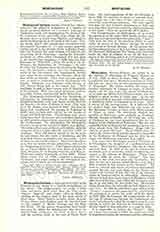

Montagnais Indians , a name given in error to the CHIPPEWAYANS, owing to a fancied resemblance to the above. The Chippewayans are really a Dene tribe, and derive their name from the Cree words chipwaw (pointed) and iveyan (skin or blanket), alluding to the original form of the main article of their dress. Their habitat is Lakes Cold, Ile-a-la-Crosse, Heart, and Caribou, and the elevated land in the vicinity of Methy Portage and the English River. To the natives frequenting these localities may be added the Athabascans, who have for habitat Lake Athabasca, the basin of Slave River, and the outlying lands to the east of Great Slave Lake. The total population of the two divisions is about 4000, the majority of whom are nomadic hunters, though not a few have of late taken to a more settled life, and cultivate potatoes. The tribe eagerly welcomed the first Catholic missionaries in 1845, and ever since they have been noted for their attachment to the Faith. They are practically all Catholics.
The Chippewayans, or Montagnais, are in reality the prototype of the entire Dene family, in that sense that they have given it their own name (dene, “men”). They were the first of the northern Denes to come under the notice of the whites, through the travels and journal of Samuel Hearne. At the present day, the flourishing mission of Ile a La Crosse, where about one thousand Montagnais live happy and contented under the aegis of religion, is one of the best evidences of the civilizing power of the Catholic Church.
A. G. MORICE

